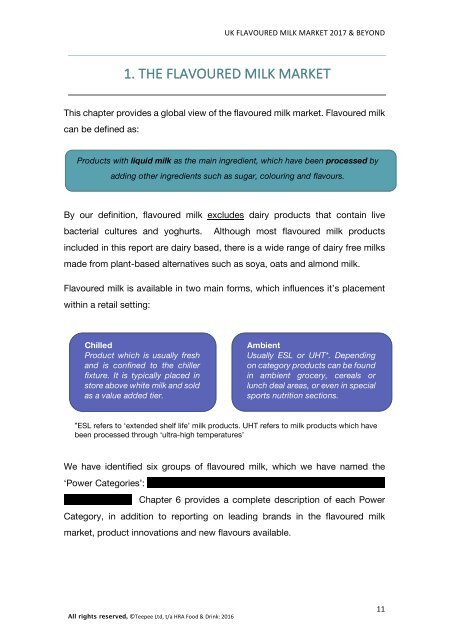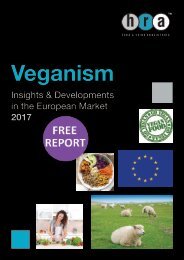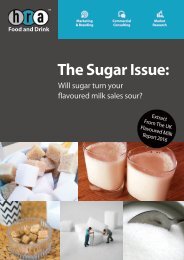Flavoured_Milk_Free
The backdrop to the UK flavoured milk market is one of relentless change. The removal of the EU milk quotas, the transition by emerging economies to a Western-style diet, the upcoming introduction of the ‘sugar tax’ and the booming sports nutrition industry are all aspects of change that create both challenges and opportunities for the UK flavoured milk market. HRA Food and Drink has developed this report as a map to guide industry stakeholders. Although volume growth in 2014 was slightly lower than in previous years, the flavoured milk market still has plenty of room for product innovation in the future.
The backdrop to the UK flavoured milk market is one of relentless change. The removal of the EU milk quotas, the transition by emerging economies to a Western-style diet, the upcoming introduction of the ‘sugar tax’ and the booming sports nutrition industry are all aspects of change that create both challenges and opportunities for the UK flavoured milk market.
HRA Food and Drink has developed this report as a map to guide industry stakeholders. Although volume growth in 2014 was slightly lower than in previous years, the flavoured milk market still has plenty of room for product innovation in the future.
You also want an ePaper? Increase the reach of your titles
YUMPU automatically turns print PDFs into web optimized ePapers that Google loves.
UK FLAVOURED MILK MARKET 2017 & BEYOND<br />
1. THE FLAVOURED MILK MARKET<br />
This chapter provides a global view of the flavoured milk market. <strong>Flavoured</strong> milk<br />
can be defined as:<br />
Products with liquid milk as the main ingredient, which have been processed by<br />
adding other ingredients such as sugar, colouring and flavours.<br />
By our definition, flavoured milk excludes dairy products that contain live<br />
bacterial cultures and yoghurts. Although most flavoured milk products<br />
included in this report are dairy based, there is a wide range of dairy free milks<br />
made from plant-based alternatives such as soya, oats and almond milk.<br />
<strong>Flavoured</strong> milk is available in two main forms, which influences it’s placement<br />
within a retail setting:<br />
Chilled<br />
Product which is usually fresh<br />
and is confined to the chiller<br />
fixture. It is typically placed in<br />
store above white milk and sold<br />
as a value added tier.<br />
Ambient<br />
Usually ESL or UHT*. Depending<br />
on category products can be found<br />
in ambient grocery, cereals or<br />
lunch deal areas, or even in special<br />
sports nutrition sections.<br />
*ESL refers to ‘extended shelf life’ milk products. UHT refers to milk products which have<br />
been processed through ‘ultra-high temperatures’<br />
We have identified six groups of flavoured milk, which we have named the<br />
‘Power Categories’: traditional, functional, coffee, confectionery, breakfast<br />
and alternative. Chapter 6 provides a complete description of each Power<br />
Category, in addition to reporting on leading brands in the flavoured milk<br />
market, product innovations and new flavours available.<br />
All rights reserved, ©Teepee Ltd, t/a HRA Food & Drink: 2016<br />
to 2017<br />
11







